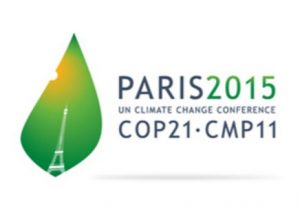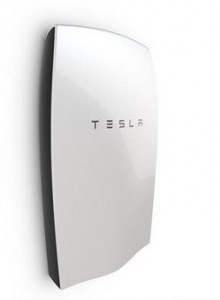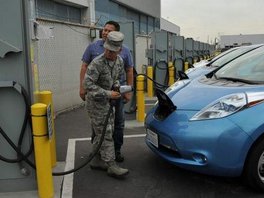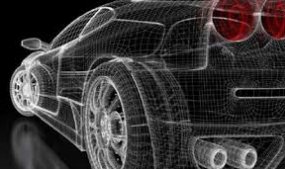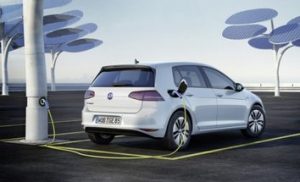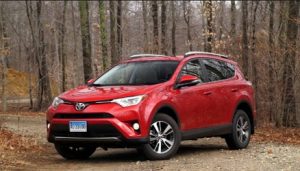 If you were to study U.S. new vehicle sales data and compare it to Plug In America’s plug-in vehicles directory, you’d see something that the two sources have in common: popularity of utility vehicles. By utility vehicles, I would include SUVs, crossovers, vans, and hatchbacks. If you take a close look at new vehicle sales in the U.S. and upcoming vehicle launches announced by automakers at the Paris Motor Show, you can get a look at the increasingly important role these vehicle categories will be playing.
If you were to study U.S. new vehicle sales data and compare it to Plug In America’s plug-in vehicles directory, you’d see something that the two sources have in common: popularity of utility vehicles. By utility vehicles, I would include SUVs, crossovers, vans, and hatchbacks. If you take a close look at new vehicle sales in the U.S. and upcoming vehicle launches announced by automakers at the Paris Motor Show, you can get a look at the increasingly important role these vehicle categories will be playing.
“Crossovers and vehicle electrification are again expected to be key reveals at the event,” said Ian Fletcher, the principal analyst for IHS Markit, at the Paris Motor Show. “The key trends are being determined by a combination of consumer demand – in terms of the number of crossovers being revealed – and legislative emissions factors, through a focus on electrification.”
Plug In America lists 27 all-electric and plug-in hybrid 2017 model year passenger vehicles available in the U.S. market on its website, and of those I would break out 12 of them being utility vehicles. For September 2016 new vehicle sales in the U.S., the largest sales category, by far, was crossovers. Combined, crossovers and SUVs made up 555,497 of the 1.4 million units sold in the U.S. during September, according to Autodata Corp. Midsize and small cars continued to be sizable categories, but overall, light-duty truck segments continue to outsell cars in the U.S. as gasoline prices stay down and the popularity of utility vehicles increases.
Americans have become more interested in buying utility vehicles over the past decade, especially crossover utility vehicles. For crossovers and SUVs, top selling models in the U.S. lately have included the Toyota RAV4 (see photo above), Honda CR-V, Ford Escape, Nissan Rogue, Ford Explorer, Chevrolet Equinox, Jeep Cherokee and Grand Cherokee, Toyota Highlander, and Subaru Forester and Outback. There are no plug-in versions of these vehicles on the market in the U.S. The Toyota RAV4 EV was pulled from the market about two years ago, while a hybrid version of the RAV4 came to market earlier this year. Toyota also offers the Highlander Hybrid.
The Toyota Prius is credited for popularizing hatchbacks, with owners appreciating the ability to lift the back door, fold down seats and gain the ability to move boxes, surfboards, grocery bags, camping gear, etc. The Nissan Leaf tapped into that accessibility along with the Tesla Model S and Ford C-Max Hybrid and Plug-in Hybrid. Car shoppers could add these practical functions to their lists along with being environmentally friendly. Subaru has used the utility functionality in its TV ad campaigns, with a family loading up gear and heading for the mountains.
Auto analysts had predicted growing popularity in utility vehicle sales for a few reasons – transporting gear like bicycles and home repair materials, families carrying more passengers, functionality for projects like moving to a new home, and the growing popularity that SUVS were having over vans and large sedans. Making them more fuel efficient helped, too, long before gas prices plunged downward. Consumers also give kudos to all of the utility vehicles, including pickups, becoming much smoother to ride in and more like cars in their seating comfort and dashboard displays.
Here’s a roundup of new vehicle launches at the Paris Motor Show and other electric vehicles in the pipeline tapping into the interest in, and functionality of, utility vehicles:
Chevy Bolt: General Motors classifies its upcoming all-electric vehicle as a crossover SUV. It’s been 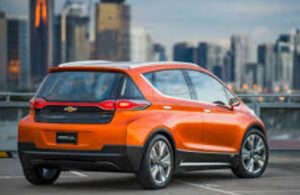 getting as much attention lately as the Nissan Leaf and Chevy Volt did during their late 2010 launches. While the range of 238 miles per charge, and its price-competitive position against the upcoming Tesla Model 3, are seen as key selling points, GM decided to invest more in a crossover SUV; as opposed to a small car like the Chevy Spark EV, which never did well in sales. The Chevrolet Sonic may have been more of a useful platform to model for the Bolt. The EPA is rating the Sonic and the Bolt as small wagons, though GM considers them differently. For some reason, the EPA has yet to adopt the crossover category.
getting as much attention lately as the Nissan Leaf and Chevy Volt did during their late 2010 launches. While the range of 238 miles per charge, and its price-competitive position against the upcoming Tesla Model 3, are seen as key selling points, GM decided to invest more in a crossover SUV; as opposed to a small car like the Chevy Spark EV, which never did well in sales. The Chevrolet Sonic may have been more of a useful platform to model for the Bolt. The EPA is rating the Sonic and the Bolt as small wagons, though GM considers them differently. For some reason, the EPA has yet to adopt the crossover category.
Generation EQ: Daimler previewed its new EQ electric car brand through launching the Generation 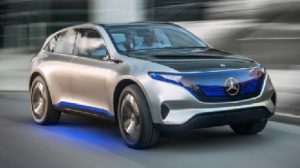 EQ concept in Paris. The EQ brand unveiling is the first step in launching 10 new battery-electric models by 2025 in Daimler’s strategy to become the global leader in electric vehicle technology; it appears to serve as a sub-brand of Daimler’s Mercedes-Benz division. Daimler said that the Generation EQ electric crossover will have a range up to 500 kilometers (311 miles), which is probably based on Europe’s NEDC standards; that will be lower in U.S. mileage range under EPA measures. The concept SUV is being moving closer to production, and is being built on an architecture developed specifically for all-electric models. That architecture is adaptable for crossovers, SUVs, sedans, coupes, and other model series, the company said.
EQ concept in Paris. The EQ brand unveiling is the first step in launching 10 new battery-electric models by 2025 in Daimler’s strategy to become the global leader in electric vehicle technology; it appears to serve as a sub-brand of Daimler’s Mercedes-Benz division. Daimler said that the Generation EQ electric crossover will have a range up to 500 kilometers (311 miles), which is probably based on Europe’s NEDC standards; that will be lower in U.S. mileage range under EPA measures. The concept SUV is being moving closer to production, and is being built on an architecture developed specifically for all-electric models. That architecture is adaptable for crossovers, SUVs, sedans, coupes, and other model series, the company said.
Volkswagen I.D.: Volkswagen’s chairman, Herbert Diess, was on the stage to unveil the new crossover 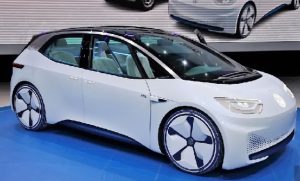 concept, called I.D., at the show. It will be the first new model built on the automaker’s MEB modular electric platform. Its battery in-flat-floor architecture is built within a futuristic exterior design with a glass roof, artistic wheel covers, digital headlamps, and sliding rear doors. It’s expected to hit production level in 2019 for purchase starting in 2020. It’s part of the automaker’s Strategy 25, where the company will be building up to one million EVs by the middle of the next decade. Last week, the automaker announced it will be expanding sales of its e-Golf nationwide in the U.S., beyond a few select states. However, VW also revealed in Paris that the I.D. will eventually replace the e-Golf (but not the Golf). Several of VW’s concept vehicles in recent years have been rolled out on SUV and crossover platforms, including the Budd-E concept.
concept, called I.D., at the show. It will be the first new model built on the automaker’s MEB modular electric platform. Its battery in-flat-floor architecture is built within a futuristic exterior design with a glass roof, artistic wheel covers, digital headlamps, and sliding rear doors. It’s expected to hit production level in 2019 for purchase starting in 2020. It’s part of the automaker’s Strategy 25, where the company will be building up to one million EVs by the middle of the next decade. Last week, the automaker announced it will be expanding sales of its e-Golf nationwide in the U.S., beyond a few select states. However, VW also revealed in Paris that the I.D. will eventually replace the e-Golf (but not the Golf). Several of VW’s concept vehicles in recent years have been rolled out on SUV and crossover platforms, including the Budd-E concept.
Mitsubishi GT-PHEV concept: Mitsubishi unveiled the GT-PHEV SUV, which has been designed  around the automaker’s next-generation plug-in hybrid system. The system uses three electric motors and an internal combustion engine designed specifically for hybrid applications. Mitsubishi’s Executive Vice President of Overseas Operations, Kozo Shiraji, introduced the GT-PHEV concept (which stands for Ground Tourer Plug-In Hybrid Electric Vehicle) as the “possible form for a future large SUV.” The company said that the driving range for its next plug-in vehicle promises to expand on the current Mitsubishi Outlander PHEV’s range. The Outlander PHEV is a strong selling plug-in vehicle in the European market.
around the automaker’s next-generation plug-in hybrid system. The system uses three electric motors and an internal combustion engine designed specifically for hybrid applications. Mitsubishi’s Executive Vice President of Overseas Operations, Kozo Shiraji, introduced the GT-PHEV concept (which stands for Ground Tourer Plug-In Hybrid Electric Vehicle) as the “possible form for a future large SUV.” The company said that the driving range for its next plug-in vehicle promises to expand on the current Mitsubishi Outlander PHEV’s range. The Outlander PHEV is a strong selling plug-in vehicle in the European market.
Chrysler Pacifica: Fiat Chrysler Automobiles is finally entering the plug-in space. According to a new  report, Fiat Chrysler engineers are putting the Chrysler Pacifica plug-in hybrid through final testing and calibration checks on the streets of metro Detroit ahead of the start of production, which is scheduled for next month. It looks just like the gasoline-powered version, except for special badges and a battery charging port on the left front fender.
report, Fiat Chrysler engineers are putting the Chrysler Pacifica plug-in hybrid through final testing and calibration checks on the streets of metro Detroit ahead of the start of production, which is scheduled for next month. It looks just like the gasoline-powered version, except for special badges and a battery charging port on the left front fender.
BMW X3: BMW i3 electric utility vehicle sales have been disappointing for the automaker. Luxury 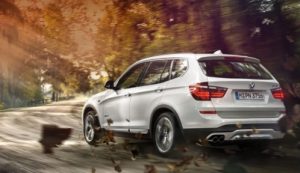 vehicle owners will buy gasoline-engine CUV and SUV versions from BMW and competitors, but so far the i3 hasn’t clicked. It has gone over well with a few EV advocates and sales have been okay. For now, BMW seems to be counting on a plug-in hybrid variant of the X3. The next-generation X3 is on its way and BMW wants to create a hybrid version as the company sees it as a more mainstream offering to the consumer. While current BMW plug-in hybrid cars (BMW X5 xDrive40e and 740e) are pricey, the X3 would give buyers another mainstream offering next to the BMW 330e, according to BMW Blog.
vehicle owners will buy gasoline-engine CUV and SUV versions from BMW and competitors, but so far the i3 hasn’t clicked. It has gone over well with a few EV advocates and sales have been okay. For now, BMW seems to be counting on a plug-in hybrid variant of the X3. The next-generation X3 is on its way and BMW wants to create a hybrid version as the company sees it as a more mainstream offering to the consumer. While current BMW plug-in hybrid cars (BMW X5 xDrive40e and 740e) are pricey, the X3 would give buyers another mainstream offering next to the BMW 330e, according to BMW Blog.
Range Rover and Land Rover: Jaguar Land Rover is working on two new plug-in hybrid models 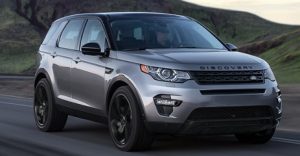 through its Range Rover and Land Rover brands. The company is first developing a new plug-in hybrid powertrain set to be offered on the Range Rover Sport. It will be based around the firm’s four-cylinder Ingenium gasoline engine, mated to the engine with an electric designed to work with the company’s existing eight-speed automatic transmission. For the second hybrid system being developed, it will be designed for the Range Rover Evoque and Land Rover Discovery Sport. It’ll utilize a three-cylinder diesel engine with an electric turbocharger and a small electric motor. Additionally, a 48-volt electrical system will provide power to the water pump and air conditioner. These models aren’t expected to debut until the end of 2018.
through its Range Rover and Land Rover brands. The company is first developing a new plug-in hybrid powertrain set to be offered on the Range Rover Sport. It will be based around the firm’s four-cylinder Ingenium gasoline engine, mated to the engine with an electric designed to work with the company’s existing eight-speed automatic transmission. For the second hybrid system being developed, it will be designed for the Range Rover Evoque and Land Rover Discovery Sport. It’ll utilize a three-cylinder diesel engine with an electric turbocharger and a small electric motor. Additionally, a 48-volt electrical system will provide power to the water pump and air conditioner. These models aren’t expected to debut until the end of 2018.
Audi E-Tron Quatro: Audi debuted the E-Tron Quattro Concept last year in Frankfurt. Known  internally as the C Bev, this all-electric SUV claims a 311-mile range by European standards. Audi says that it will be sized between its Q5 and a Q7 SUV models. Audi has been quite pleased by how high its sales numbers have been in the SUV segment in recent years, so an electric SUV makes a great deal of sense to the company for hitting emissions targets. Earlier this year, the company announced it will be going into production on the E-Tron Quatro by 2018. Audi said that the new model will use three electric motors and a quick charging, high‑capacity battery.
internally as the C Bev, this all-electric SUV claims a 311-mile range by European standards. Audi says that it will be sized between its Q5 and a Q7 SUV models. Audi has been quite pleased by how high its sales numbers have been in the SUV segment in recent years, so an electric SUV makes a great deal of sense to the company for hitting emissions targets. Earlier this year, the company announced it will be going into production on the E-Tron Quatro by 2018. Audi said that the new model will use three electric motors and a quick charging, high‑capacity battery.
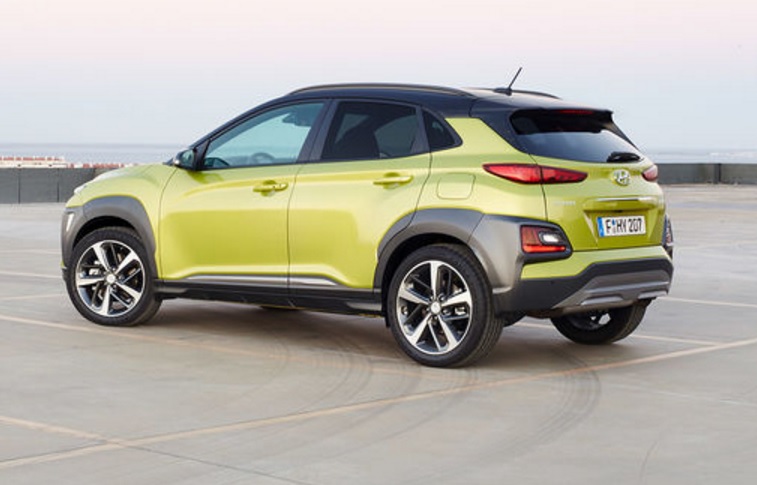 electrified options will be available and if any of those variations will come to the U.S. The all-electric model is supposed to come out in 2018 and will have range of about 240 miles; though that will likely be fewer miles in the U.S. under the Environmental Protection Agency rating. “Clean mobility is a core strategy of the Hyundai Motor Company in the future,” the company said during unveiling of the Kona in Seoul. It could join the Ionic as part of the Korean automaker’s ambitious global strategy for green vehicle introductions. All three electrified versions of the Ioniq were displayed on the freeway side of the Hyundai’s U.S. headquarters office recently.
electrified options will be available and if any of those variations will come to the U.S. The all-electric model is supposed to come out in 2018 and will have range of about 240 miles; though that will likely be fewer miles in the U.S. under the Environmental Protection Agency rating. “Clean mobility is a core strategy of the Hyundai Motor Company in the future,” the company said during unveiling of the Kona in Seoul. It could join the Ionic as part of the Korean automaker’s ambitious global strategy for green vehicle introductions. All three electrified versions of the Ioniq were displayed on the freeway side of the Hyundai’s U.S. headquarters office recently. having one woman on the board often leads to more women joining, Bonderman said, “Actually, what it shows is that it’s much more likely to be more talking.” This followed news of CEO Travis Kalanick taking a leave of absence from the company, and a plan released by the company Tuesday that more accountability will be brought to executives for their actions. Huffington has been part of a panel investigating allegations made by a female ex-employee back in February over sexual harassment by an Uber executive. Earlier this month, Uber fired 20 employees over harassment, discrimination, and inappropriate behavior stemming from the February blog post by the female ex-employee. This has been a stormy year for Uber that includes an intensive court room battle with Alphabet’s Waymo subsidiary in its claims against Uber stealing its intellectual property for self-driving cars. Uber’s main U.S. competitor, Lyft, seems to be benefiting from the storm Uber is under, and continues to add partner companies to its future.
having one woman on the board often leads to more women joining, Bonderman said, “Actually, what it shows is that it’s much more likely to be more talking.” This followed news of CEO Travis Kalanick taking a leave of absence from the company, and a plan released by the company Tuesday that more accountability will be brought to executives for their actions. Huffington has been part of a panel investigating allegations made by a female ex-employee back in February over sexual harassment by an Uber executive. Earlier this month, Uber fired 20 employees over harassment, discrimination, and inappropriate behavior stemming from the February blog post by the female ex-employee. This has been a stormy year for Uber that includes an intensive court room battle with Alphabet’s Waymo subsidiary in its claims against Uber stealing its intellectual property for self-driving cars. Uber’s main U.S. competitor, Lyft, seems to be benefiting from the storm Uber is under, and continues to add partner companies to its future.
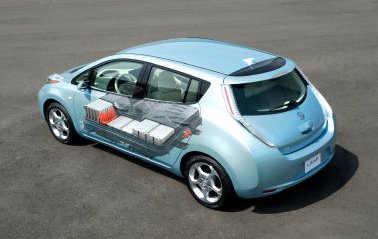 EV battery costs dropping: A new study by
EV battery costs dropping: A new study by 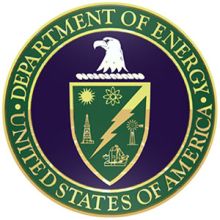 Big cuts in Trump’s DOE budget: The Trump administration is proposing dramatic cuts to the Department of Energy budget for the 2018 fiscal year, which begins October 1. Funding would be cut entirely for the Clean Cities program and the DOE’s Vehicle Technologies Program would see huge cuts.
Big cuts in Trump’s DOE budget: The Trump administration is proposing dramatic cuts to the Department of Energy budget for the 2018 fiscal year, which begins October 1. Funding would be cut entirely for the Clean Cities program and the DOE’s Vehicle Technologies Program would see huge cuts.  The question of which clean technology will prevail in the car of the future continues to permeate the auto industry. Plug-in electrified vehicle sales led the way in recent months, breaking the 1% mark of total sales in the U.S. for the first time in November; and seeing ambitious PEV product launch announcements from Volkswagen, Daimler, BMW, and Toyota in the fall. That was triggered by Tesla receiving more than 400,000 down payments soon after showing its Model 3 reveal during the spring; and post-VW “dieselgate” scandal government crackdowns increased in Europe, the U.S., and South Korea.
The question of which clean technology will prevail in the car of the future continues to permeate the auto industry. Plug-in electrified vehicle sales led the way in recent months, breaking the 1% mark of total sales in the U.S. for the first time in November; and seeing ambitious PEV product launch announcements from Volkswagen, Daimler, BMW, and Toyota in the fall. That was triggered by Tesla receiving more than 400,000 down payments soon after showing its Model 3 reveal during the spring; and post-VW “dieselgate” scandal government crackdowns increased in Europe, the U.S., and South Korea. If you were to study U.S. new vehicle sales data and compare it to Plug In America’s plug-in vehicles directory, you’d see something that the two sources have in common: popularity of utility vehicles. By utility vehicles, I would include SUVs, crossovers, vans, and hatchbacks. If you take a close look at new vehicle sales in the U.S. and upcoming vehicle launches announced by automakers at the Paris Motor Show, you can get a look at the increasingly important role these vehicle categories will be playing.
If you were to study U.S. new vehicle sales data and compare it to Plug In America’s plug-in vehicles directory, you’d see something that the two sources have in common: popularity of utility vehicles. By utility vehicles, I would include SUVs, crossovers, vans, and hatchbacks. If you take a close look at new vehicle sales in the U.S. and upcoming vehicle launches announced by automakers at the Paris Motor Show, you can get a look at the increasingly important role these vehicle categories will be playing. getting as much attention lately as the Nissan Leaf and Chevy Volt did during their late 2010 launches. While the range of 238 miles per charge, and its price-competitive position against the upcoming Tesla Model 3, are seen as key selling points, GM decided to invest more in a crossover SUV; as opposed to a small car like the Chevy Spark EV, which never did well in sales. The Chevrolet Sonic may have been more of a useful platform to model for the Bolt. The EPA is rating the Sonic and the Bolt as small wagons, though GM considers them differently. For some reason, the EPA has yet to adopt the crossover category.
getting as much attention lately as the Nissan Leaf and Chevy Volt did during their late 2010 launches. While the range of 238 miles per charge, and its price-competitive position against the upcoming Tesla Model 3, are seen as key selling points, GM decided to invest more in a crossover SUV; as opposed to a small car like the Chevy Spark EV, which never did well in sales. The Chevrolet Sonic may have been more of a useful platform to model for the Bolt. The EPA is rating the Sonic and the Bolt as small wagons, though GM considers them differently. For some reason, the EPA has yet to adopt the crossover category. EQ concept in Paris. The EQ brand unveiling is the first step in launching 10 new battery-electric models by 2025 in Daimler’s strategy to become the global leader in electric vehicle technology; it appears to serve as a sub-brand of Daimler’s Mercedes-Benz division. Daimler said that the Generation EQ electric crossover will have a range up to 500 kilometers (311 miles), which is probably based on Europe’s NEDC standards; that will be lower in U.S. mileage range under EPA measures. The concept SUV is being moving closer to production, and is being built on an architecture developed specifically for all-electric models. That architecture is adaptable for crossovers, SUVs, sedans, coupes, and other model series, the company said.
EQ concept in Paris. The EQ brand unveiling is the first step in launching 10 new battery-electric models by 2025 in Daimler’s strategy to become the global leader in electric vehicle technology; it appears to serve as a sub-brand of Daimler’s Mercedes-Benz division. Daimler said that the Generation EQ electric crossover will have a range up to 500 kilometers (311 miles), which is probably based on Europe’s NEDC standards; that will be lower in U.S. mileage range under EPA measures. The concept SUV is being moving closer to production, and is being built on an architecture developed specifically for all-electric models. That architecture is adaptable for crossovers, SUVs, sedans, coupes, and other model series, the company said. concept, called I.D., at the show. It will be the first new model built on the automaker’s MEB modular electric platform. Its battery in-flat-floor architecture is built within a futuristic exterior design with a glass roof, artistic wheel covers, digital headlamps, and sliding rear doors. It’s expected to hit production level in 2019 for purchase starting in 2020. It’s part of the automaker’s Strategy 25, where the company will be building up to one million EVs by the middle of the next decade. Last week, the automaker announced it will be expanding sales of its e-Golf nationwide in the U.S., beyond a few select states. However, VW also revealed in Paris that the I.D. will eventually replace the e-Golf (but not the Golf). Several of VW’s concept vehicles in recent years have been rolled out on SUV and crossover platforms, including the Budd-E concept.
concept, called I.D., at the show. It will be the first new model built on the automaker’s MEB modular electric platform. Its battery in-flat-floor architecture is built within a futuristic exterior design with a glass roof, artistic wheel covers, digital headlamps, and sliding rear doors. It’s expected to hit production level in 2019 for purchase starting in 2020. It’s part of the automaker’s Strategy 25, where the company will be building up to one million EVs by the middle of the next decade. Last week, the automaker announced it will be expanding sales of its e-Golf nationwide in the U.S., beyond a few select states. However, VW also revealed in Paris that the I.D. will eventually replace the e-Golf (but not the Golf). Several of VW’s concept vehicles in recent years have been rolled out on SUV and crossover platforms, including the Budd-E concept. around the automaker’s next-generation plug-in hybrid system. The system uses three electric motors and an internal combustion engine designed specifically for hybrid applications. Mitsubishi’s Executive Vice President of Overseas Operations, Kozo Shiraji, introduced the GT-PHEV concept (which stands for Ground Tourer Plug-In Hybrid Electric Vehicle) as the “possible form for a future large SUV.” The company said that the driving range for its next plug-in vehicle promises to expand on the current Mitsubishi Outlander PHEV’s range. The Outlander PHEV is a strong selling plug-in vehicle in the European market.
around the automaker’s next-generation plug-in hybrid system. The system uses three electric motors and an internal combustion engine designed specifically for hybrid applications. Mitsubishi’s Executive Vice President of Overseas Operations, Kozo Shiraji, introduced the GT-PHEV concept (which stands for Ground Tourer Plug-In Hybrid Electric Vehicle) as the “possible form for a future large SUV.” The company said that the driving range for its next plug-in vehicle promises to expand on the current Mitsubishi Outlander PHEV’s range. The Outlander PHEV is a strong selling plug-in vehicle in the European market. report, Fiat Chrysler engineers are putting the Chrysler Pacifica plug-in hybrid through final testing and calibration checks on the streets of metro Detroit ahead of the start of production, which is scheduled for next month. It looks just like the gasoline-powered version, except for special badges and a battery charging port on the left front fender.
report, Fiat Chrysler engineers are putting the Chrysler Pacifica plug-in hybrid through final testing and calibration checks on the streets of metro Detroit ahead of the start of production, which is scheduled for next month. It looks just like the gasoline-powered version, except for special badges and a battery charging port on the left front fender. vehicle owners will buy gasoline-engine CUV and SUV versions from BMW and competitors, but so far the i3 hasn’t clicked. It has gone over well with a few EV advocates and sales have been okay. For now, BMW seems to be counting on a plug-in hybrid variant of the X3. The next-generation X3 is on its way and BMW wants to create a hybrid version as the company sees it as a more mainstream offering to the consumer. While current BMW plug-in hybrid cars (BMW X5 xDrive40e and 740e) are pricey, the X3 would give buyers another mainstream offering next to the BMW 330e, according to BMW Blog.
vehicle owners will buy gasoline-engine CUV and SUV versions from BMW and competitors, but so far the i3 hasn’t clicked. It has gone over well with a few EV advocates and sales have been okay. For now, BMW seems to be counting on a plug-in hybrid variant of the X3. The next-generation X3 is on its way and BMW wants to create a hybrid version as the company sees it as a more mainstream offering to the consumer. While current BMW plug-in hybrid cars (BMW X5 xDrive40e and 740e) are pricey, the X3 would give buyers another mainstream offering next to the BMW 330e, according to BMW Blog. through its Range Rover and Land Rover brands. The company is first developing a new plug-in hybrid powertrain set to be offered on the Range Rover Sport. It will be based around the firm’s four-cylinder Ingenium gasoline engine, mated to the engine with an electric designed to work with the company’s existing eight-speed automatic transmission. For the second hybrid system being developed, it will be designed for the Range Rover Evoque and Land Rover Discovery Sport. It’ll utilize a three-cylinder diesel engine with an electric turbocharger and a small electric motor. Additionally, a 48-volt electrical system will provide power to the water pump and air conditioner. These models aren’t expected to debut until the end of 2018.
through its Range Rover and Land Rover brands. The company is first developing a new plug-in hybrid powertrain set to be offered on the Range Rover Sport. It will be based around the firm’s four-cylinder Ingenium gasoline engine, mated to the engine with an electric designed to work with the company’s existing eight-speed automatic transmission. For the second hybrid system being developed, it will be designed for the Range Rover Evoque and Land Rover Discovery Sport. It’ll utilize a three-cylinder diesel engine with an electric turbocharger and a small electric motor. Additionally, a 48-volt electrical system will provide power to the water pump and air conditioner. These models aren’t expected to debut until the end of 2018. internally as the C Bev, this all-electric SUV claims a 311-mile range by European standards. Audi says that it will be sized between its Q5 and a Q7 SUV models. Audi has been quite pleased by how high its sales numbers have been in the SUV segment in recent years, so an electric SUV makes a great deal of sense to the company for hitting emissions targets. Earlier this year, the company announced it will be going into production on the E-Tron Quatro by 2018. Audi said that the new model will use three electric motors and a quick charging, high‑capacity battery.
internally as the C Bev, this all-electric SUV claims a 311-mile range by European standards. Audi says that it will be sized between its Q5 and a Q7 SUV models. Audi has been quite pleased by how high its sales numbers have been in the SUV segment in recent years, so an electric SUV makes a great deal of sense to the company for hitting emissions targets. Earlier this year, the company announced it will be going into production on the E-Tron Quatro by 2018. Audi said that the new model will use three electric motors and a quick charging, high‑capacity battery.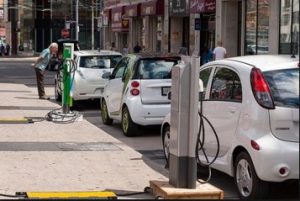 Support for nationwide network: The Obama administration is adding to its support for
Support for nationwide network: The Obama administration is adding to its support for 